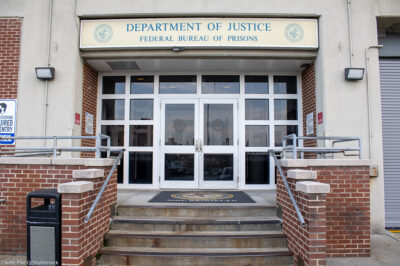Each year, 176,000 Americans die as a result of racial segregation, according to a study reported in The New York Times this week. That’s more than the number of people killed by strokes or in accidents each year. While the study does not describe precisely how segregation — defined as living in a neighborhood with more than 25 percent African-American population — kills, other research has noted that segregation is linked to inferior health care, inadequate access to healthy food, substandard housing, environmental conditions and lower quality schools, all of which can contribute to health problems that ultimately lead to early death.
Yet despite this astounding burden, federal funding to overcome segregation and its contributing causes each year pales in comparison to the $5 billion dollars spent annually to address 562,000 cancer-related deaths (156,000 of which are from lung cancer)
On top of this, the Supreme Court has made it even harder to find ways to mitigate the damage caused by segregation by holding that the U.S. Constitution only protects against intentional racial discrimination. The Supreme Court has also drastically limited the ability of school districts to desegregate, preventing them from taking many proactive measures to integrate schools. As a result, many children across the nation still attend public schools that are effectively segregated, and children graduating from segregated public school systems are significantly less likely to earn a college degree (estimated to contribute to nearly a quarter of a million deaths each year) and at much higher risk of living out a life in poverty (133,000 deaths).
Even though the Supreme Court has blocked legal efforts to remedy the effects of segregation, the ACLU found a creative way to force governments to confront and fix the deadly effects of segregation. Twenty years ago, the ACLU brought a landmark case, Sheff v. O’Neill, against the state of Connecticut, charging the Hartford School District’s racially segregated schools violated minority students’ constitutional rights to an equal education. At the time the lawsuit was filed, minorities comprised 93 percent of the student population, despite being only 25 percent of schoolchildren statewide.
Our case went all the way to the Connecticut Supreme Court, which ultimately did what the U.S. Supreme Court would not by ruling that even unintentional segregation in education violated the rights of these schoolchildren under the state constitution.
Thanks to the Connecticut Supreme Court, children who go through Hartford’s public school system will now have a fighting chance to graduate high school, attend college, and take advantage of economic opportunities to lift themselves out of poverty and live long and healthy lives. The ACLU, NAACP Legal Defense and Education Fund and Center for Children’s Advocacy continue to monitor the state of Connecticut’s compliance with the Sheff ruling to this day. Progress has been made, there is more work to be done, as the Sheff case deals only with segregation in education, and will not help those who confront segregation in housing or the workplace. And not every state constitution has been or will be read as expansively as it was in Connecticut in Sheff.
Congress can help tackle some of these deadly effects of segregation. It should act now by amending Title VI of the Civil Rights Act of 1964 so that private individuals can go to court to address the unintentional discriminatory acts which continue to have such a devastating impact on their lives. By so doing, it can help address the problems created by the nation’s highest court, and maybe save a few lives in the process.
Learn more about racial justice: Sign up for breaking news alerts, follow us on Twitter, and like us on Facebook.


